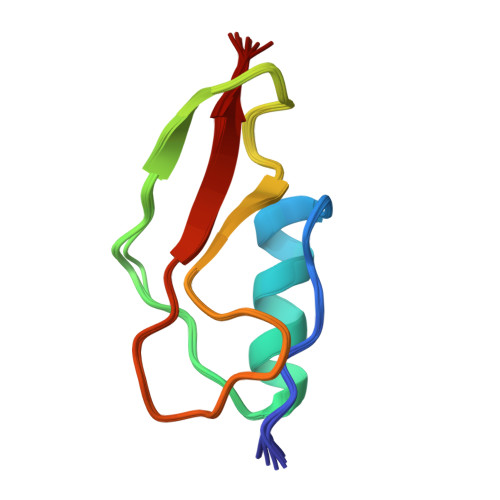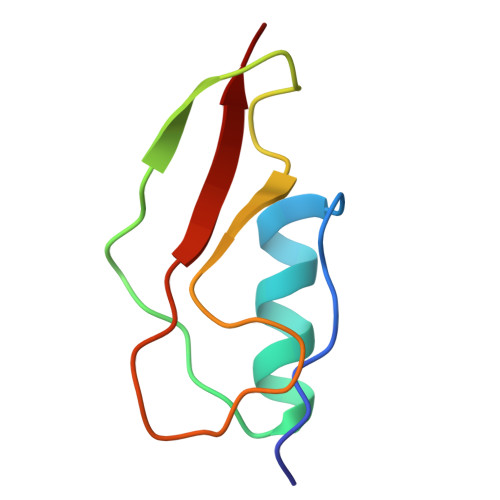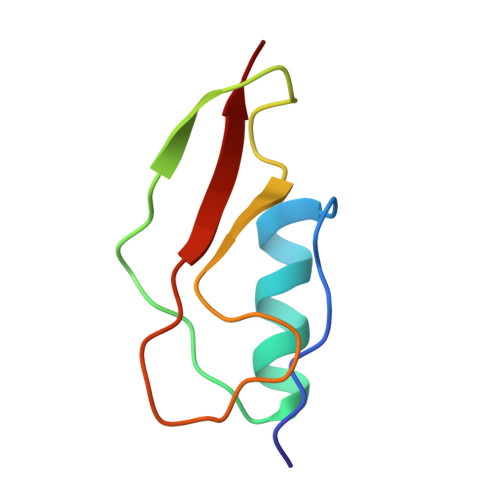Structural and binding properties of the PASTA domain of PonA2, a key penicillin binding protein from Mycobacterium tuberculosis.
Calvanese, L., Falcigno, L., Maglione, C., Marasco, D., Ruggiero, A., Squeglia, F., Berisio, R., D'Auria, G.(2014) Biopolymers 101: 712-719
- PubMed: 24281824
- DOI: https://doi.org/10.1002/bip.22447
- Primary Citation of Related Structures:
2MGV - PubMed Abstract:
PonA2 is one of the two class A penicillin binding proteins of Mycobacterium tuberculosis, the etiologic agent of tuberculosis. It plays a complex role in mycobacterial physiology and is spotted as a promising target for inhibitors. PonA2 is involved in adaptation of M. tuberculosis to dormancy, an ability which has been attributed to the presence in its sequence of a C-terminal PASTA domain. Since PASTA modules are typically considered as β-lactam antibiotic binding domains, we determined the solution structure of the PASTA domain from PonA2 and analyzed its binding properties versus a plethora of potential binders, including the β-lactam antibiotics, two typical muropeptide mimics, and polymeric peptidoglycan. We show that, despite a high structural similarity with other PASTA domains, the PASTA domain of PonA2 displays different binding properties, as it is not able to bind muropeptides, or β-lactams, or polymeric peptidoglycan. These results indicate that the role of PASTA domains cannot be generalized, as their specific binding properties strongly depend on surface residues, which are widely variable.
Organizational Affiliation:
CIRPeB, University of Naples Federico II, Naples, Italy.
















